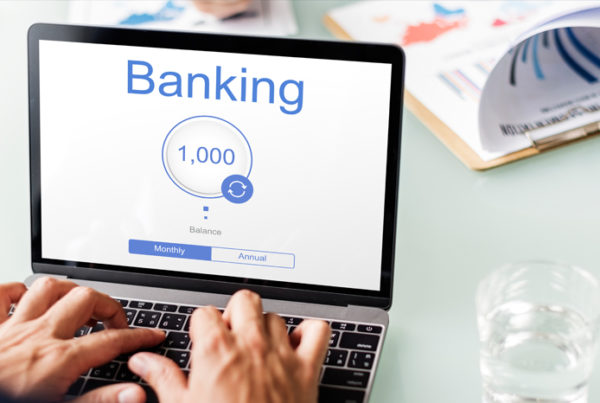Fortuitous circumstances led me to visit the United Nations during the General Assembly week not too long ago. I was amongst the privileged few to participate as a panelist at the Digital Future of Development track during the proceedings.
In fact, my good fortune kept adding up. The panel was conducted by Achim Steiner, administrator of the United Nations Development Programme. Permit me to provide a brief overview of the proceedings. Overall, the session unearthed multi-dimensional perspectives. Unsurprisingly, really, given that each individual is a trailblazer in their respective field!
The first panelist, Rob Nail, chief executive officer (CEO), Singularity University, offered his perspective on technology uptake. He stressed that while the general expectation from any new technology is immediate (and phenomenal) uptake, this is a far cry from reality. Honestly, I couldn’t agree more, technologies take time to reach an inflection point. Consider mobile banking and digital financial services. Initial adoption was sluggish (to say the least) in most countries, before an inflection point was reached. Thereafter, uptake took off significantly, to put it mildly.
Next up was H.E. Dr. Amani Abou-Zeid, commissioner of Infrastructure and Energy, the African Union. She passionately aired her views on the transformation the continent is undergoing, what with the uptake of artificial intelligence, et all. Her optimism was infectious; it spurred me to ensure our efforts in Africa increase multifold. Equally moving was Gregory Rockson, CEO, mPharma, who showcased the importance of leveraging technology to make medical treatment affordable for all. Last but certainly not the least, was Natalie Jabangwe, CEO, EcoCash. She highlighted how Zimbabwe has transformed into a digital- first financial services economy, whilst stressing upon the importance of financial inclusion.
On my part, I felt it pertinent to highlight the role India was playing in the field of digital financial services. As is common knowledge, India was one of the early adopters of digital financial services in the developing world. Internet banking made its foray in the country in the second half of the nineties, while mobile banking made its debut a decade later. Let’s not forget, however, India offers an interesting study in contrasts. While a small part of the country was digitally evolving, a significant portion remained untouched by the digital revolution. This stark reality compelled government, banks and financial institutions to take drastic measures. These entities therefore collaborated and, subsequently, created disruptions to accelerate financial inclusion in the country.
It is imperative to state, however, that microfinance was the first major disruption in this space. The numbers tell all-as of March 2019, there are over 93 million microfinance accounts in India. The industry boasts a gross loan portfolio (GLP) of $26.38 billion. Another aspect of microfinance in India is the Self-Help Group (SHG) movement. This has, without a doubt, emerged as the world‘s largest and most successful network of women-owned community-based microfinance institution. The Self Help Group Bank Linkage Programme (SHG-BLP) is a landmark model initiated by the National Bank for Agriculture and Rural Development (NABARD) in 1992. It is aimed at delivering affordable banking services and facilitating financial inclusion. Today, SHG-BLP caters to 120 million households through more than 10 million SHGs. Deposits span over $3.24 billion and annual loan off-take value is $8.16 billion.
The JAM trinity (Jan Dhan, Aadhar and mobile phones) is another major initiative. Launched in 2014, Jan Dhan has certainly proved its mettle, providing over 370 million bank accounts. Consequently, over 80 per cent of India’s adults are now financially included, compared to a mere 35 per cent in 2011. Notably, 53 per cent of Jan Dhan account holders are women and 58 per cent reside in rural and semi-urban areas. To provide a global perspective, Jan Dhan upholds several of the United Nations’ Sustainable Development Goals (SDGs). These include the SDG 8, expanding financial inclusion, SDG 5 – giving women equal access to financial services and SDG 10 – promoting economic inclusion for all.
Universal financial access attained through Jan Dhan certainly changed the game. For one, the government obtained the opportunity to reduce corruption and losses incurred whilst transferring subsidies and benefits to citizens. The Direct Benefit Transfer (DBT) and Aadhar tools proved very effective to achieve this. The DBT enabled the government to directly transfer subsides and benefits of various social welfare schemes to the beneficiaries’ bank accounts. Meanwhile, the Aadhar identification tool, with over 1.2 billion holders, was linked to the beneficiaries’ bank accounts which, of course, had its own set of benefits. Currently, DBT supports 437 schemes of 56 ministries and has processed over $119.68 billion since inception. DBT and other governance reforms have brought about estimated savings of $19.78 billion. Not just that, it has helped India make significant progress in SDG 16 (Peace, Justice and Strong Institutions) by reducing corruption.
It doesn’t end there, of course. Merely storing funds in bank accounts isn’t enough. Customers would, naturally, require touch-points to cash-out the funds, which is more vital since India is still primarily a cash-based economy. The Micro ATMs introduced by the National Payments Corporation of India (NPCI) in 2015 offered a viable solution. The aim is simple-expand the banking system’s last-mile reach, particularly in rural areas. Since its inception, over 577 million financial transactions valuing $21.29 billion have been processed by micro ATMs. Moreover, mobile handsets have proliferated significantly, naturally implying that these devices have emerged as important transaction channels as well.
These initiatives, have, of course, had a cascading impact overall. Here’s how-collectively, the Jan Dhan, Aadhar, the proliferation of mobile handsets and DBT have simplified the implementation of government-driven schemes. These schemes, needless to say, drive the SDGs as well. For instance, the Ujjwala Scheme aims to provide clean cooking fuel to women who have traditionally relied on firewood, coal and dung cakes. An equally vital aim is to prevent premature deaths, due to polluted air in the household-estimated at 480,000 deaths per year! Under the scheme, 80 million households below the poverty line have been provided a free gas connection. This was followed by the “Give it Up” campaign, where over 11 million affluent customers surrender their LPG subsidy. These initiatives removed 38 million “ghost” or “fake” beneficiaries from the system. The $6.3 billion saved was then distributed to customers in rural areas without access to clean cooking gas. The Ujjwala Scheme directly or indirectly impact multiple SDGs including SDG 3 (Good Health and Well Being), SDG 5 (Gender Equality), SDG 7 (Affordable and Clean Energy) and SDG 16 (Peace, Justice and Strong Institutions).
Another example is the Micro Units Development & Refinance Agency (MUDRA). This institution is aimed at providing loans to micro and small enterprises, with credit needs below $14,000. Under the MUDRA scheme, 155.6 million loans amounting to $101.26 billion have been disbursed. About 75 per cent of the recipients are women. The MUDRA scheme impacts the SDG 8 (Decent Work and Economic Growth) and the SDG 9 (Industry, Innovation and Infrastructure).
The National Payments Corporation of India (NPCI) threw its hat in the ring once again, with the introduction of two vital schemes. I allude, of course, to the Immediate Payment Service (IMPS) and the Unified Payments Interface (UPI). The former (for which I was, as a happy coincidence, involved in establishing the standards) provides 24×7 real-time interbank electronic fund transfer. The Unified Payments Interface (UPI) powers multiple bank accounts into a single mobile application (of any participating bank). Of course, several banking features, seamless fund routing and merchant payments are all merged under one hood. UPI allows users to create a unique virtual address (like abc@xyzbank) and use it for transferring money and make payments from devices such as mobile handsets. The IMPS and UPI have 498 and 141 participating banks respectively. Over the last one year, (from September 2018 to August 2019) IMPS and UPI have collectively processed 10.26 billion transactions, valuing $465.66 billion.
Clearly, progress has been marching on in India, with (hopefully) no signs of flagging. I would like to conclude by stating that technology ought to be invested in “for the greater good”. Digital technologies ought to encompass every section of society and every individual. No holds barred, of course.






